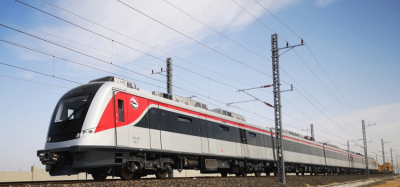Eurostar and St. Pancras to double capacity in major international station expansion project
Posted: 3 July 2025 | Gabriel Higgins | No comments yet
Eurostar and St. Pancras Highspeed plan a major expansion to boost capacity and meet soaring demand for sustainable European travel.


Eurostar and London St. Pancras Highspeed have signed a letter of intent to more than double capacity at St. Pancras International, marking a major step forward in futureproofing one of Europe’s busiest international rail hubs. The expansion supports rising demand for sustainable cross-border rail travel, which is forecast to triple by 2040 from 11 million to 35 million passengers annually.
Architecture practice Hawkins\Brown has been appointed to conduct a full design and feasibility study. This will explore how the existing space can be reconfigured to improve passenger flows and operational efficiency while preserving the station’s heritage. Current operational capacity has already grown from 1,800 to 2,000 passengers per hour, with projections of nearly 5,000 an hour following phase two.
The expansion will proceed in three phases. Phase one will deliver short-term improvements within the current station footprint, aiming to optimise security and border control processes to allow an additional 2,700 passengers per hour within the next three to four years. Phase two, to be completed by 2028, will improve the international area’s layout and its connection to the main concourse, enhancing the overall customer experience. Phase three, planned for the 2030s, will explore relocating the arrivals flow upstairs and examine further growth potential.
Richard Thorp, Chief Operating Officer at London St. Pancras Highspeed, said: “With growing passenger demand for international train travel, it is important that St. Pancras International station is future-proofed and optimised to accommodate this.”
Simon Lejeune, Chief Safety and Stations Officer at Eurostar, added: “Eurostar is the green gateway to Europe, already welcoming up to 45,000 customers a day at St Pancras with demand growing.”
Andrew Davies, Partner at Hawkins\Brown, said: “Our challenge is to create a welcoming new landmark for London, with minimal disruption to the travelling public in the process.”
The feasibility study is due to conclude by the end of 2025, with formal design and construction plans to follow.
NEW REPORT FROM GLOBAL RAILWAY REVIEW: Track Insight – Track Maintenance | Transforming Track Maintenance Through Technology
Our latest expert-led Track Insight explores how industry leaders are revolutionising the future of track maintenance through cutting-edge innovation and real-world strategies.
From automation and robotics now streamlining inspections and repairs, to predictive maintenance powered by IoT sensors and advanced analytics, the rail sector is entering a new era of precision and efficiency. Companies like Goldschmidt, Bentley Systems, and MxV Rail are leading the charge, redefining how infrastructure is managed with AI, machine learning, and digital twins to reduce downtime and extend asset life.
In this new data-rich landscape, organisations such as Amtrak and the Rail Accident Investigation Branch are demonstrating how to turn vast streams of information—from track geometry to environmental monitoring into actionable intelligence for safer, smarter networks.
Download this insightful, practical guide for FREE and see how your operations can evolve – READ FOR FREE NOW!
Related topics
High-Speed Rail, Infrastructure Developments, Multimodality, Passenger Experience/Satisfaction, Regulation & Legislation, Station Developments, Sustainability/Decarbonisation, The Workforce, Timetabling/Scheduling








